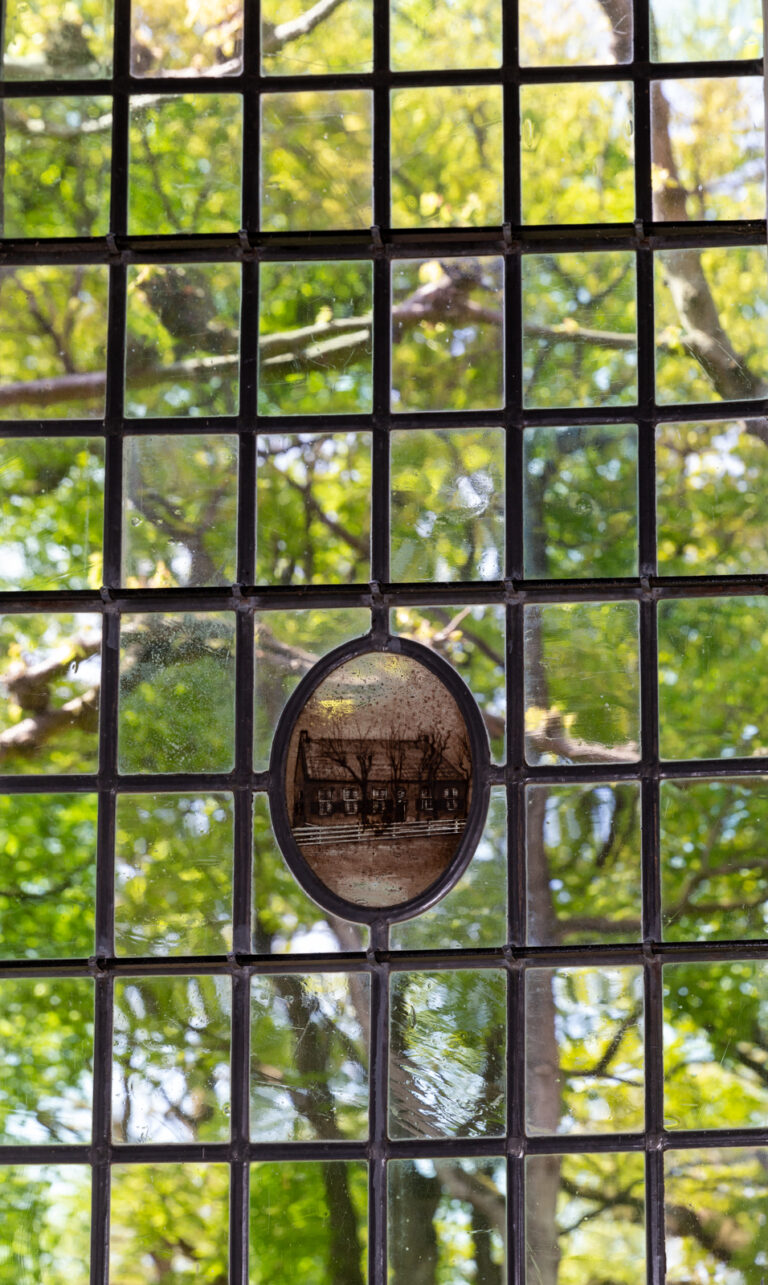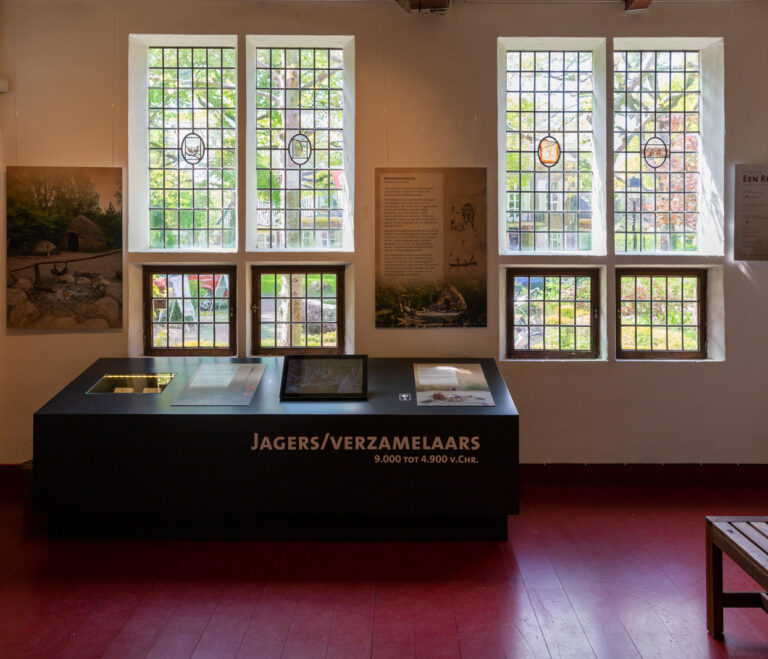A visit to the OERmuseum in Diever is already an experience in itself because of its charming location. The archaeological museum is located in the ‘Schultehuus’. The schultehuis in Diever is currently the only more or less original schultehuis in Drenthe. Berend Ketel had the house (re)built in 1604. According to architectural historians, the original building dates back to the early 1500s.

The Schultehuus was restored during the period of 1935 to 1937. Most of the wall tiles are from the Schultehuus in Ruinerwold, which was demolished in 1903. They were donated in 1937 by J. Derks Brouwer, grandson of the last schulte of Ruinerwold. The supporting beams in the front rooms feature stylised horse heads, an ancient Germanic symbol, carved into the supports. This is the main evidence that the original building is from the early 1500s.
In this schultehuus Berend Ketel was the first schulte: mayor, judge, notary and bailiff at the same time. He was a so-called ‘yeoman’ or self-owned farmer, someone who owns and cultivates his own land. During the Eighty Years’ War (1568-1648), the area around Diever was reduced to ashes by Geuzen in February 1582. Count William Louis of Nassau, stadtholder (or steward) of Friesland, ended the Spanish reign in 1594. He appointed new, reliable public servants for local government in his territory of power. In Drenthe, in 1596, he appointed Berend Ketel as schulte of Diever and ‘bannerschulte’ (which means head schulte) of the ‘Dieverderdingspil’. Until 1737, five successive generations of Ketel held the office of schulte in this house.

Until the end of the 15th century, a ‘dingspil’ was an administrative district. Drenthe had six of them, of which the Dieverderdingspil was one. From each dingspil, four self-owned farmers were appointed as ‘ette’ (judge) in the district administration of Drenthe. The dingspills were allowed to meet independently, which often took place in the open air. Berend Ketel had his carved coat of arms placed above the front door of the Schultehuus. This coat of arms, like that of his wife Hermanna Arents, can still be seen on the stained glass in the side window of the schulte room today. It consists of a profiled blue crossbeam on a field of silver, with a green dragon with a double-split red tongue as its crest. The silver and the crossbar can also be found in the coat of arms of Diever.
The OERmuseum is open from the Easter weekend to the Autumn holidays. And in the Christmas (except for the 25th, 26th and 31st of December and the 1st of January) and Spring holidays, from 13:30 to 17:00 hours Tuesdays to Sundays.
ADDRESS & CONTACT
Brink 7, 7981 BZ Diever
General information:
mail@oermuseum.nl
Business contacts:
Bart Friso +31(0)6-2680 2024
beheer@oermuseum.nl